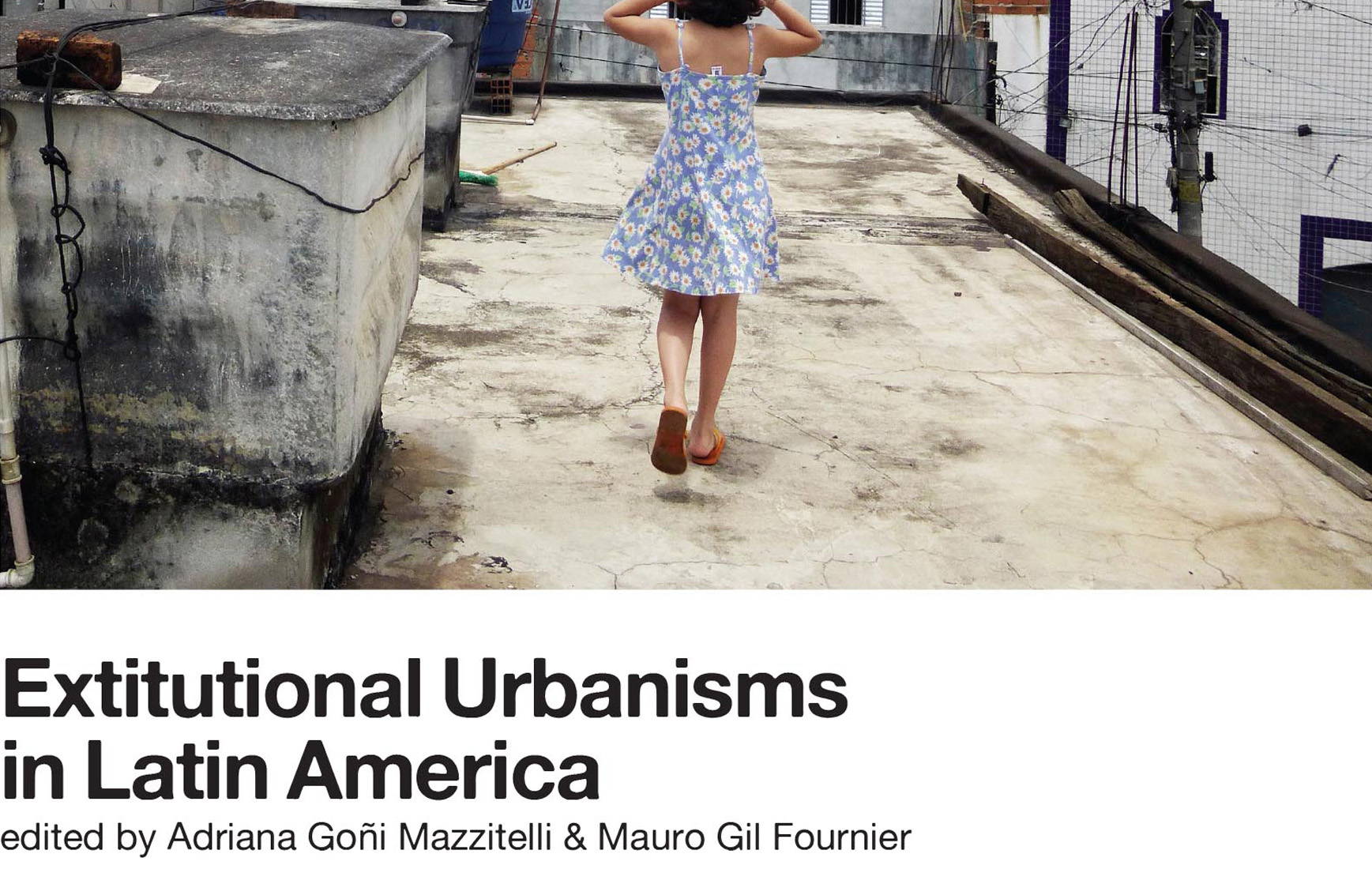
return to the issue
Institutional-Extitutional Planning in Latin America and the Caribbean:
Potential and Precautionary Notes
Preface by Clara Irazábal
Institutions as finite assemblages
Institutions are bundles of ‘things’ connected through relations produced and reproduced by the values and practices of large social collectives. Scott (2001,p. 48, cited in Spicer, 2015) defines institutions as “cultured-cognitive, normative and regulative elements that… provide stability and meaning to social life… Institutions are transmitted by various types of carriers, including symbolic systems, relational systems, routines and artefacts.” The planning institution of zoning, for instance, brings about different types of people together through binding rights and obligations: planners, policymakers, public functionaries, designers, lawyers, judges, developers, building workers, landowners, and lay citizens. In addition, zoning brings together plots of land, buildings, (mis)opportunities for development, projects for future land usages and structures, wealth earned or lost due to the regulation, power granted to or taken from different stakeholders as a result of the regulation, etc. All these people, things, and relationships among them constitute the zoning institution.
These people, things, and relationships have, to various extents and shapes, independent agency and can simultaneously configure other networks with other people, things, and relationships. Those new networks, in some instances, can destabilize or altogether antagonize the original institutions. If and while these new networks do not constitute established institutions in-and-of themselves, we can name them extitutions. By definition, then, extitutions are fragile and ephemeral, yet they do hold power. In the context of planning and development, extitutions may compose «processes to assemble diverse forms of capital and resources, based on the collective self-empowerment created by citizens» (P2P Foundation Wiki, 2017). They have the power to either destabilize and thus induce the transformation of existing institutions or become themselves new institutions. «Compared to an institution, in which clear boundaries create an enclosed environment that affords a distinct function for its ‘inhabitants’, an extitution is a flexible and provisional network of movement with no clear ‘inside’ or ‘outside’: extitutions are open» (The Open University, 2014). An extitution «exceeds, disturbs and does not fit with an institution. Some examples include the ‘gay’ who does not fit the institution of the ‘traditional’ nuclear family, the ‘refugee’ who does not fit into the modern state, or the ‘idler’ who does not fit with the disciplines of the modern workplace» (Spicer, 2015, p. 26). Spicer (2015, p. 25) claims, «[i]nstitutions are structured around an extitutional core that always escapes them.»
Most institutions have finite timespans. Hardly can institutions last forever. When enough people lose faith in an institution, it can fade away or die. It can also morph into something else that proves more credible and efficient and can thus agglutinate enough social confidence around it to consolidate it. For instance, despite its extensive global adoption, zoning is just a little more than 100 years old as a planning institution. The experience we now have with the tool has served to reveal both its potential and limitations, and more creative, flexible, and effective ways of regulating urban development have been invented and adopted in different contexts (e.g., form-based zoning, transfer of development rights) or altogether resisted (anti-zoning movements or no-zoning cities, e.g., Houston, Texas, which does not have zoning and governs development by codes that address how property can be subdivided but do not address land use).
Movements for the right to housing and the right to the city in the world have catalyzed some of the most recent prominent extitutions. For example, in Barcelona, Spain, the PAH (Plataforma de Afectados por la Hipoteca or Mortgage-Affected Citizens’ Platform) has been a leader in the struggle for the right to housing in the city and country. Constituting an extitutional system, PAH works with; «multiple initiatives, associations, research platforms, psychologists, lawyers, social caretakers and body-action platforms, such as Stop Deshaucios (Stop Evictions), that develop a common objective but not by consensus. Each of them develops their [sic] own strategies to function as an assemblage of multiple entities that includes images and symbolic representations, huge social networks and communities of mutual support. Alongside these entities, there are also self-support protocols, negotiations, protests and conflicts of material visibilities, such as the locks of the houses or objects of resistance. Those who are affected by eviction use fridges to stop the police from entering violently or various extitutional spatialities as part of the process ranging from a house eviction to demonstrations in the public space. These extitutional procedures allow all kinds of non-economic capital to be shared such as symbolic, relational, knowledge, care, affects, work, health capital etc.». (P2P Foundation Wiki, 2017, np)
In a similar example about the PAH in Madrid, Gil-Fournier Esquerra et al. (2015,p. 89) argues for the notion of extitution to explain these systems: «Studies on the urban citizen organization have not developed a system to explain the different modes and processes as a movement-rhizome formed around the housing. … how they are formed, how they operate in the city, how the action enables trading and how other non economical capitals are at stake in this process. … the different modes in which the creation of citizen networks not come only from public space and squares but also from financial negotiations, banks, housing and bodies. House is not any more an individual, particular and intimate space».
I think extitutions in these ways—as rhizomatic assemblages of people, things, and relationships challenging established institutions—have always been there. What we are experiencing is a growing awareness of their existence, their time-space compression and morphing speed in the context of expanding neoliberalism, and the ways they compose «hybrid ‘extitutional-institutional’ forms» (The Open University, 2014, np).
The Extitutional State
The essays in this special issue reflect on practices that are always in contention with the state. Even for the most autonomous of practices, their reference is the state. They reveal a state that is almost omnipresent, disciplining, and even punitive. While I appreciate the realities of both the actually-existing states and the fear and governmentality that they instill in their governed, states do not behave uniformly. On the one hand, states selectively enact these practices of ‘law and order’ upon some of their subjects, and on the other hand, they are subservient or acquiescent to larger supranational powers and ideological creeds. For many, states in Latin America and the Caribbean may seem largely disciplining, even punitive, but this is mostly with regards to low-income and minority communities: For Afro-descendants, indigenous, peasants, and informal dwellers, the state is instead complicit and enabling with regards to wealthy and powerful actors within the nation, and even subservient to extranational actors.
Besides, the state may seem omnipresent, but it does not reach some urban and extra-urban territories in Latin America and the Caribbean. Urban self-built settlements or favelas, informal periurban and exurban areas, and large plots of rural lands in the region remain largely outside the purview of the state, except for when those lands become desirable as new frontiers of capital accumulation in revanchist cities or as neo-extractivist projects to feed the hunger of transnational corporations and oil and other mineral’s global markets. Even the most progressive governments in Latin America have sold off their public commitments to protect environmental and communal wellbeing in the name of new developmentalist projects. In these cases, the state is arguably the main enactor of extitutionality in general and extitutional development in particular.
The essays in this issue also convey a contrasting understanding between the state and the people. In the experiences analyzed here, the state acts from above whereas the people act from below and they display asymmetrical power and conflicting agendas. This is oftentimes the case. However, I argue that both the state and the people are not monolithic. The state is itself composed of people, and pending their political ideologies and ethics, they steer state action in favor or disfavor of the public good.
Similarly, there is heterogeneity among the people, and leadership fractures along class, race, ethnicity, gender, and other identity traits can make ‘community projects’ quite dissimilar to each other with regards to both processes and outcomes related to democracy, participation, empowerment, and equity.
Therefore, we have to debunk and problematize the dichotomous understanding of the state and the people to understand instead how people are imbricated and implicated in the state’s dealings. Such understanding would make more feasible the strategizing work necessary to keep the state accountable to its public mandate.
Institutional-Extitutional Dialectics
Just as it has been discussed with regards to the formal and the informal urban practices and built environment in Latin America and the Caribbean, I argue that the extitutional is embedded inside the institutional, it is constitutive of the institutional, and they are intrinsically codependent. The notion of extitutional then becomes helpful in shedding light on those aspects of development dynamics not traditionally considered within the realms of the institutional, which made our so-called institutional analyses incomplete.
In/Extitutional Academic Relations
Institution and extitutions are in constant dialectics. Within the confines of the status quo, Spicer (2010, p. 30) explains:«The extitution is a figure that threatens to undo the regularity and order established by the careful regulation of an institution. The criminal is not the law-abiding citizen. The insane are bereft of rationality. The sick have taken leave of health. The child is in need of education. The act of giving order to an extitution therefore involves an attempt to give rise to institutional work. The asylum cleans up insanity and seeks to restore the rule of rationality. Institutions that regulate the market get rid of irregularities and return us to the normalities of perfect competition. The corporation eschews idlers and ensures efficient return on investment. The work of institutions involves attempt to give rational order to that which exists outside of institutional order, that which is essentially formless».
Global planning education is a necessity nowadays, but we cannot take it for granted if we want to avoid neocolonial relations between Europe and its colonies (past and present). European-based scholars doing academic research, teaching, and service in Latin America and the Caribbean write several essays in this special issue. How do these practices come about? How do they establish relations with academic institutions, faculty, students, and communities in the region? Are the benefits of such endeavors reciprocal, and if not, why not, and how could they become more so? I understand that the asymmetries that may exist in these relationships are mostly structural and do not necessarily represent the doings or ethics of individual scholars or practitioners. However, we all have a responsibility of both critically analyzing and denouncing the inequalities that may exist, and ultimately resisting and trying to overcome them. Can the institutional-extitutional analytical framework shed some light on this matter too?
Hopefully, not only can greater analytical discernment of institutional-extitutional arrangements and their dialectics help scholars, policymakers, practitioners, and community leaders understand the changing socio-spatial landscapes they are immersed in. It can also empower them to navigate such landscapes more effectively and potentially transform them in manners that bring about more sustainability and justice.
REFERENCES
Gil-Fournier Esquerra, M, Jaenicke Fontao, M. & Acosta Perez, E. 2015, “The urban
citizens’ extitutional processes in Madrid”, MONU magazine, n° 23, pp. 89-96.
P2P Foundation Wiki. Extitutional Processes. 21 February 2017, https://wiki.p2pfoundation.net/Extitutional_Processes, accessed April 3, 2020.
Spicer, A. 2010, “Extitutions: The other side of institutions”. Ephemera: Theory & politics
in organization. Vol. 10, n°1, pp 25-39.
The Open University CCIG Forum 32 2014, From institution to extitution? Publics in
movement, identities in flux. 25th February,
https://stadium.open.ac.uk/stadia/preview.php?s=31&whichevent=2451







